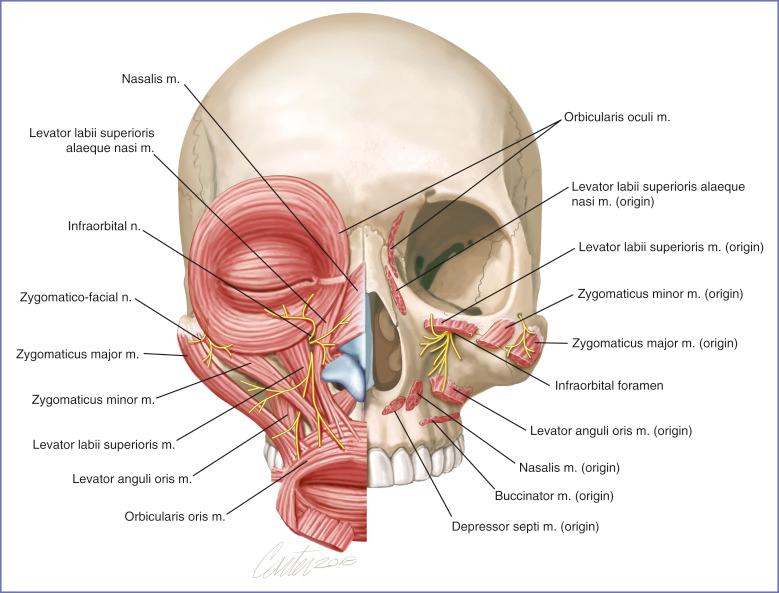Physical Address
304 North Cardinal St.
Dorchester Center, MA 02124
A relative deficiency in lower midface projection may be congenital or acquired, particularly after cleft surgery and maxillary fractures. Since the majority of white faces are convex, midface concavity is often considered less attractive. Fig. 10.1 shows the average midface inclination of white North Americans as determined by Farkas. Patients with satisfactory occlusion and lower midface concavity can have their aesthetic desires satisfied with skeletal augmentation. Augmentation of the pyriform aperture area is usually performed to move the lower midface profile from one of concavity to relative convexity.
Implantation of alloplastic material in the pyriform aperture area can simulate the visual effect of Le Fort I advancement and other skeletal manipulations. It is often a useful adjunct during the rhinoplasty procedure. Augmenting the skeleton in this area can alter the projection of the nasal base, the nasolabial angle, and the vertical plane of the lip. Fig. 10.2 shows the average nasolabial angle in white North Americans as determined by Farkas. It also tends to efface the nasolabial fold of the overlying soft tissue envelope.
The implant design and surgical techniques described here are extensions of others’ previous efforts to improve paranasal aesthetics. Severe cases of nasomaxillary deficiency, seen with Binder’s syndrome, have been treated with bone and cartilage grafts alone or together with ostesotomies. Lower midface deficiency has also been treated with cartilage grafts or silicone implants as adjuncts to aesthetic rhinoplasty.
The surface of the maxilla is very irregular. Inferiorly, this is due to a series of eminences and corresponding depressions reflecting the apices of the teeth. The incisive fossa is the depression above the prominent incisors. This depression gives rise to the origin of the depressor septi. The canine tooth forms a vertical ridge that separates the incisive fossa from the canine fossa, which is deeper and larger than the incisive fossa. The canine fossa gives rise to the levator anguli oris. The infraorbital foramen is located just above the canine fossa. It allows exit of the infraorbital nerve and vessels. They travel beneath the levator superioris and above the levator anguli oris. The infraorbital nerve supplies the skin of the lower lid, the side of the nose, most of the cheek and upper lip. Medial to the infraorbital foramen is the nasal notch, which is a concavity whose margin gives rise to the dilator naris as it ends below as the anterior nasal spine.

Become a Clinical Tree membership for Full access and enjoy Unlimited articles
If you are a member. Log in here